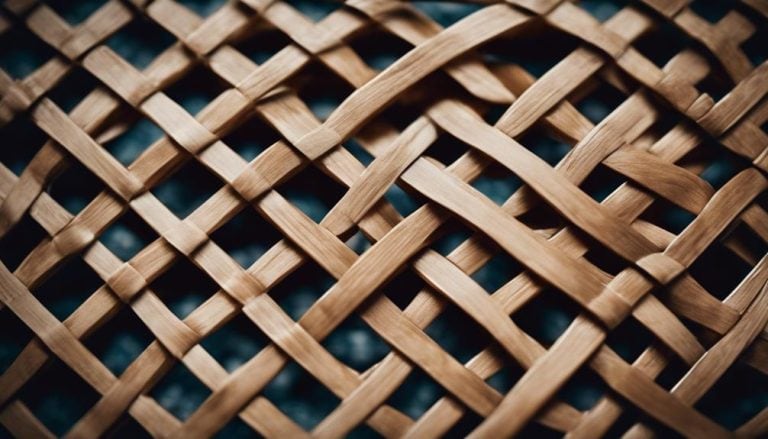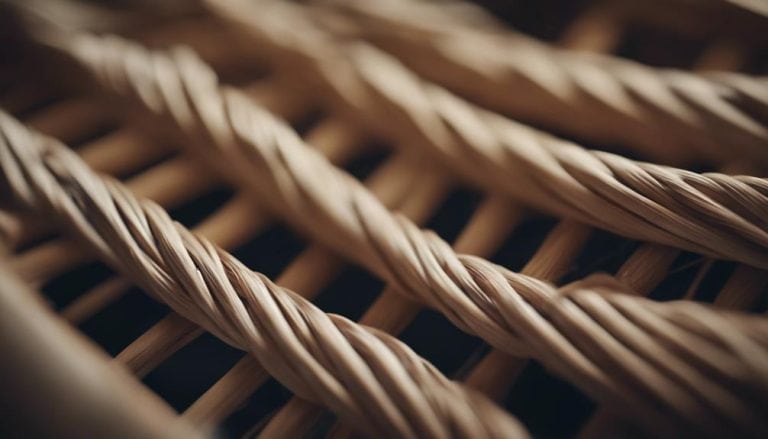Essential Tools for Danish Cord Weaving
Crafting Danish cord masterpieces requires precise tools for a seamless process. Each instrument plays a pivotal role in achieving intricate designs, from cord cutters to weaving needles. But what about the unsung heroes behind the scenes? Stay tuned to discover the lesser-known tools that elevate Danish cord weaving from ordinary to extraordinary.
Essential tools for Danish cord weaving include a loom, a shuttle, and a needle. The loom is used to hold the cord in place while weaving, the shuttle is used to move the cord through the loom, and the needle is used to tie the cord together.
Key Takeaways
- Cord Cutters ensure precise cuts for clean and professional finishes.
- Weaving Needles aid in intricate patterns with proper tension control.
- Tensioning Tools maintain consistent weaving for a polished outcome.
- Securing Tools like the Awl simplify cord placement and enhance durability.
Cord Cutters for Precise Cuts
When beginning a Danish cord weaving project, the first tool essential for achieving accurate and clean cuts on the cord is the cord cutter. Cord maintenance is crucial in ensuring the smooth progress of the weaving process. Keeping the cord neatly trimmed not only aids in the weaving techniques but also contributes to the overall appearance of the final piece.
Precision is key in Danish cord weaving, and the cord cutter plays a significant role in achieving this. By providing sharp blades, cord cutters make it easy to trim the cord to the desired length without fraying or creating uneven edges. This attention to detail results in a professional finish and enhances the overall quality of the weaving.
Consistency in cord length is vital for a seamless weaving experience. Cord cutters help maintain uniformity, ensuring each cord is cut to the same length, ultimately leading to a high-quality and cohesive final product. Investing in a reliable pair of cord cutters can streamline the weaving process and elevate the accuracy of your Danish cord projects.
Weaving Needles for Intricate Patterns
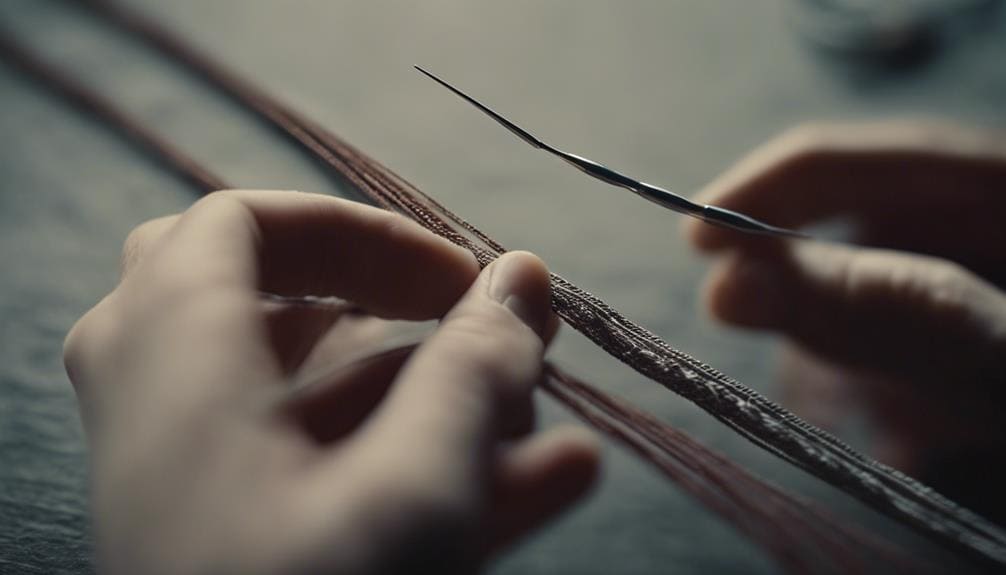
To achieve intricate patterns in Danish cord weaving, selecting the right weaving needles is crucial due to their various sizes accommodating different cord thicknesses and their design features aiding in navigating tight spaces. Needle sizes play a significant role in weaving, as they determine the intricacy and detail of the patterns created.
The blunt tip of the needles prevents snagging or splitting of the cord, ensuring smooth weaving. Needles with a bent or curved design are especially useful for maneuvering through complex patterns and tight spaces, enhancing the overall weaving experience.
Choosing the correct needle size is essential to maintain proper cord tensioning and achieve the desired weaving density. Weaving needles crafted from durable materials like metal or plastic ensure longevity and reliability for intricate furniture weaving projects.
- Precise selection of needle sizes enhances weaving intricacy
- Curved needle design facilitates navigation in tight weaving spaces
- Proper needle size aids in maintaining cord tensioning
- Blunt needle tips prevent the snagging or splitting of cords
- Durable materials like metal and plastic ensure long-lasting use
Tensioning Tools for Consistent Weaving
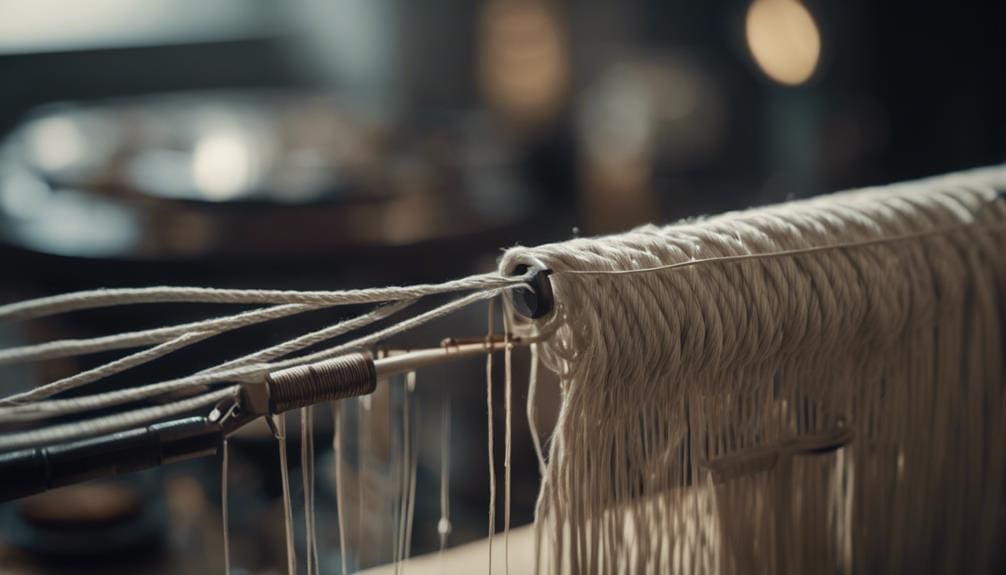
Utilizing weaving clamps ensures consistent tension for achieving uniform Danish cord weaving results with a professional finish. Weaving clamps are indispensable tools that hold the cord securely in place, preventing any slippage during the weaving process.
These adjustable tensioning tools offer precise control over the tightness of the cord, which is crucial for maintaining evenness in the weave. Proper tensioning with weaving clamps is vital for creating a polished look in Danish cord weaving, eliminating any irregularities and ensuring a smooth, well-crafted outcome.
| Tensioning Tools | Description | Benefits |
|---|---|---|
| Weaving Clamps | Securely hold the cord in place | Prevent slippage during weaving |
| Adjustable Tension Tools | Allow for precise control | Ensure uniform weaving |
| Professional Finish | Achieve polished look | Eliminate unevenness in the weave |
In Danish cord weaving, the cord thickness plays a significant role in determining the weaving tension. Using the right tensioning tools and techniques can maintain the desired tension level, resulting in flawless weaving patterns.
Awl for Securing Cord
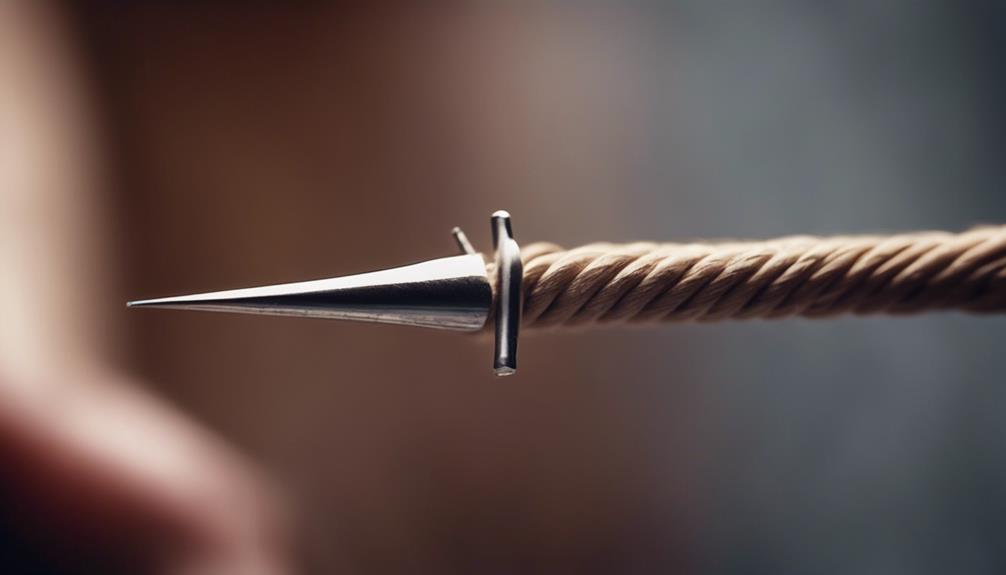
Weaving with a Danish cord requires an awl as a crucial tool for securing the cord tightly within the chair frame. The awl plays a vital role in weaving, ensuring that the cord is securely fastened and properly tensioned to create a sturdy and comfortable seat.
Here are some key points about the awl for securing the cord:
- Precision: The awl allows for precise placement of the cord, ensuring that it follows the weaving techniques accurately.
- Durability: Using an awl to secure the cord, the woven seat maintains its integrity and structure over time.
- Ease of Use: The pointed tip of the awl makes it easy to create holes in the chair frame for weaving, simplifying the process.
- Professional Finish: Using an awl results in a professional-looking finish, enhancing the overall aesthetics of the woven Danish cord seat.
- Control: The awl controls cord tensioning, allowing for a consistent and even weave throughout the project.
Clamps for Holding Frame Steady
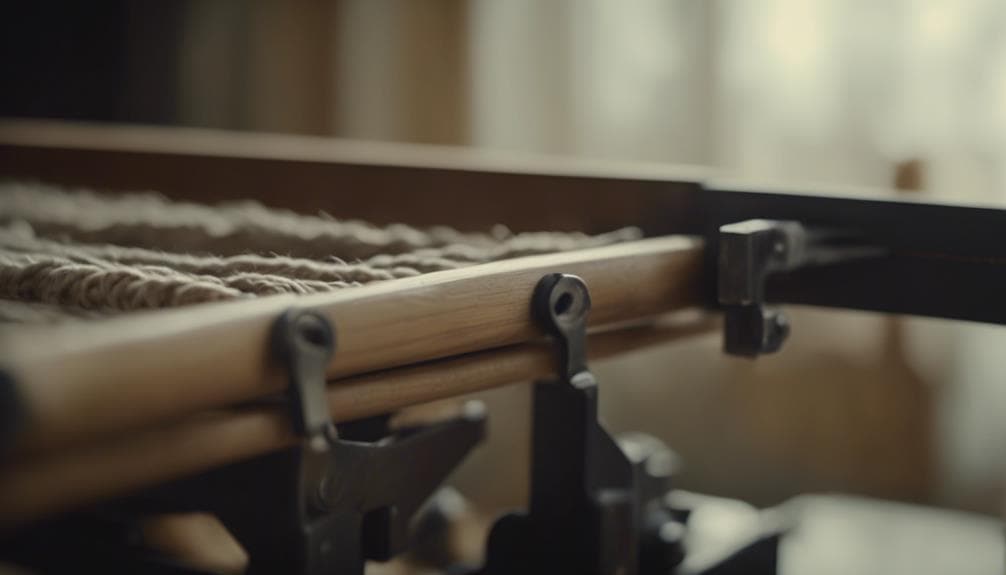
How can clamps optimize the stability of the chair frame during Danish cord weaving? When holding the frame steady, choosing the right clamp type is crucial. Different frames may require specific clamps for optimal results. Spring clamps are handy for smaller projects or frames with intricate designs, offering quick application and removal.
On the other hand, bar clamps excel in securing larger chair frames, providing sturdy support throughout the weaving process. Proper positioning of the clamps is equally important. Placing them strategically along the frame ensures even tension distribution, essential for achieving a uniform and professional-looking weave.
By securing the frame in place with precision, clamps help prevent any unwanted movement that can disrupt the weaving pattern. This stability enhances the weaving experience and contributes to the final product’s overall quality. Remember, investing time in selecting the right clamps and positioning them correctly can significantly impact the outcome of your Danish cord-weaving project.
Frequently Asked Questions
How Do You Do a Danish Cord Weave?
To do a Danish cord weave, I attach the cord to the frame, maintaining even tension. I weave methodically, using knots to join cords and hide them for a clean finish. Splicing cords seamlessly and securing the end completes the process.
What Is the Nail Spacing for Danish Cord Weaving?
Maintaining consistent nail spacing of 5/8 inch in Danish cord weaving is vital for proper tension and weave integrity. This spacing secures the cord firmly, preventing shifting. Pairing it with suitable cord thickness complements weaving techniques, resulting in durable and professional outcomes.
Which Is Better Laced or Unlaced Danish Cord?
For me, laced Danish cord offers intricate detailing, while unlaced provides a more relaxed feel. The laced cord is structured and ideal for complex weaves. Unlaced is great for simpler designs. It’s about choosing the right style for your project.
How Much Danish Cord Do I Need?
I estimate materials based on chair patterns and design. Understanding weaving techniques and chair dimensions is key for determining Danish cord needs. Careful planning and having an extra cord for variations are essential before starting.
Conclusion
In conclusion, with cord cutters for precise cuts, weaving needles for intricate patterns, tensioning tools for consistent weaving, an awl for securing the cord, and clamps for holding the frame steady, mastering Danish cord weaving is within reach. These essential tools make the process efficient and allow for the creation of intricate and durable patterns that embody the essence of iconic Danish furniture designs. So, equip yourself with these tools and embark on your Danish cord-weaving journey confidently and precisely.


